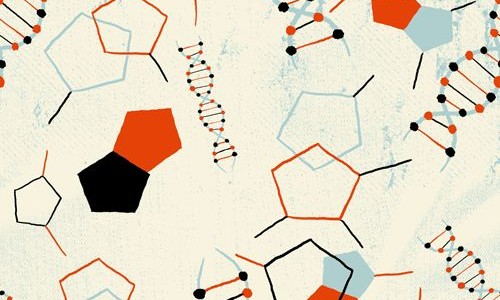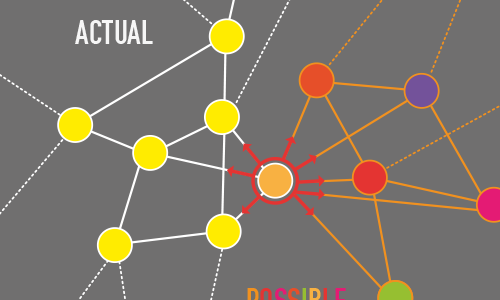Mark Buchanan is a physicist and science writer based in Europe. A former editor with the
international science journal Nature and also New Scientist, he is the author of three books and
numerous articles exploring the ideas of modern physics. He writes occasionally for the New York Times, and has a monthly column in Nature Physics.
Author: wp_satellite_ws
Where are We on the Origin of Life Problem
by Stuart Kauffman
Abstract: I will discuss several approaches to the origin of life issue, mostly based on classical physics, some on recent results on the “Poised Realm”, hovering reversibly between quantum and classical behaviors. Classically, work on the origin of life follows these lines: 1) Search for template replicating RNA or RNA cousins in the RNA World. 2) The Lipid World, of self reproducing, dividing liposomes. Work combining RNA World and Lipid World is underway. 3) Collectively autocatalytic sets of polymers, achieved experimentally with RNA, with DNA, and with peptides. Peptide sets show that RNA is not needed for molecular reproduction. We can hope for evolving protocells by housing replicating polymer systems in dividing liposomes, where lipids are also synthesized by the total system. Open ended evolution involves selectable “genes”, available in the RNA world, and in peptide autocatalytic sets. In addition open ended evolution derives from Darwinian preadaptations of protoells in their abiotic worlds and with one another. Poised Realm aspects may include quantum criticality with unique electronic properties, now found in most evolved proteins.
Combinatorial Evolutionary Dynamics as a Prototype for Complex Systems
by Stefan Turner
Abstract: Many evolutionary systems are combinatorial in the sense that the creation of new entities is based on the combination of already existing things. By formalising this kind of dynamics into mathematical models one can realise that evolutionary systems are prototypes of complex systems, where the underlying network structure — that determines the next possible steps in evolution (adjacent possible)— co-evolves with the population of phase space (which things currently exist). We show that these models are self-organised critical and therefore are able to capture several key features of evolutionary systems, such as power laws in creation and extinction statistics, punctuated equilibria, and phases of massive and rapid re-structuring. We show an example where the model can be used to explain innovation dynamics as seen in world trade data.
The Expansion into the Adjacent Possible as a Microscopic Mechanism Driving Innovation
by Francesca Tria
Abstract: Recently, large databases witnessing human activities allowed the observation that novelties – such as the individual process of listening a song for the first time – and innovation processes – such as the fixation of new genes in a population of bacteria – share striking statistical regularities.
Studying Collective Human Decision Making and Creativity with Evolutionary Computation
by Hiroki Sayama
Abstract: In this talk, we will present a summary of our interdisciplinary research project “Evolutionary Perspective on Collective Decision Making” that was conducted through close collaboration between computational, organizational, and social scientists at Binghamton University. We redefined collective human decision making and creativity as evolution of ecologies of ideas, where populations of ideas evolve via continual applications of evolutionary operators such as reproduction, recombination, mutation, selection, and migration of ideas, each conducted by participating humans. Based on this evolutionary perspective, we generated hypotheses about collective human decision making and creativity, using agent-based computer simulations. The hypotheses were then tested through several experiments with real human subjects. Throughout this project, we utilized evolutionary computation (EC) in non-traditional ways— as a theoretical framework for reinterpreting the dynamics of idea generation and selection, as a computational simulation model of collective human decision-making processes, and as a research tool for collecting high-resolution experimental data on actual collaborative design and decision making from human subjects.
Major Transitions in Information Technology
by Sergi Valverde
Abstract: When looking at the history of technology, we can see that all inventions are not of equal importance. Only of a few technologies have the potential to start a new branching series (specifically, by increasing diversity), have a lasting impact in human life and ultimately became turning points. Technological transitions correspond to times and places in the past when a large number of novel artefact forms or behaviours appeared together or in rapid succession. Why does that happen? Is technological innovation continuous and gradual or it occurs in sudden leaps and bounds? The evolution of information technology allows for a quantitative and theoretical approach to technological transitions. The value of information systems experiences sudden changes when when we learn how to use this technology, when we can accumulate large amounts of information and when communities of practice create and exchange information freely. The coexistence between gradual improvements and discontinuous technological change is a consequence of the asymmetric relationship between complexity and hardware and software. Using a cultural evolution approach, I suggest that sudden changes in the organization of information technologies depend on the high costs of maintaining and transmitting reliable information.
From Innovation to Diversification: A Simple Competitive Model
by Riccardo Di Clemente
Abstract: Few attempts have been proposed in order to describe the statistical features and historical evolution of the export bipartite matrix countries/products. An important standpoint is the introduction of a products network, namely a hierarchical forest of products that models the formation and the evolution of commodities. In the present article, we propose a simple dynamical model where countries compete with each other to acquire the ability to produce and export new products. Countries will have two possibilities to expand their export: inno- vating, i.e. introducing new goods, namely new nodes in the product networks, or copying the productive process of others, i.e. occupying a node already present in the same net- work. In this way, the topology of the products network and the country-product matrix evolve simultaneously, driven by the countries push toward innovation.
Justin Mullins
Justin Mullins is a consultant editor at New Scientist where he has covered topics ranging from Chernobyl to the emergence of artificial intelligence. He was New Scientist’s San Francisco bureau chief during the first dotcom boom and later its Boston Editor and Technology Editor. He is a former teaching fellow at the University of California, Berkeley.
Introduction
by Vittorio Loreto
Abstract: Innovations are key factors in the evolution of human societies, since they represent the primary motor to explore new solutions in ever-changing and unpredictable environments. New technological
artefacts, scientific discoveries, new social and cultural structures, are very often triggered by mutated
external conditions. Unfortunately, the detailed mechanisms through which humans and societies express their creativity and innovate are largely unknown and no comprehensive mathematical framework has been proposed so far. Creative solutions, novelties and innovation share an important feature: often, innovative events do not happen by chance, rather they seem to be triggered by some previous novelty or innovation. In studies of biological, technological, and cultural evolution, it has been hypothesized that one innovation can lay the groundwork for another by creating fresh opportunities. In our daily lives, a similar process may account for why one new thing so often leads to another. This idea has been beautifully summarized by the notion of adjacent possible introduced by Stuart Kauffman. In this picture the advance into the adjacent possible is the driving force for correlating innovative events, and novelties are produced through an exploration of a space – physical, conceptual, technological or biological – that enlarges itself whenever one reaches a point of the space never touched before.
Identifying the Features of Popular and Significant Artworks in Popular Music Production
by Bernardo Monechi
Abstract: In the world of artistic production there is a constant struggle to achieve fame and popularity. This fierce competition between artistic creations results in the emergence of highly popular elements that are usually well remembered throughout the years, while many other works that did not achieve that status are long-forgotten. However, there is another level of importance that must be considered in order to have a more complete picture of the system. In fact many works that have influenced the production itself, both due to their aesthetic and cultural value, might have not been or might not be popular anymore. Due to their relevance for the whole artistic production, it is important to identify them and save their memory for obvious cultural reasons. In this talk, we focus on the duality between popularity and significance in the context of popular music, trying to understand the features of music albums belonging to one or both of these classes. By means of the user-generated data gathered on Last.fm, an on-line catalog of music albums, we define a growing conceptual space in the form of a network of tags representing the evolution of music production during the years. We use this network in order to define a set of general metrics, characterizing the features of the albums and their impact on the global music production. We then adopt these metrics to implement an automated prediction method of both the commercial success of a creation and its belonging to expert-made lists of particularly significant and important works. We show that our metrics are not only useful to asses such predictions, but can also highlight important differences between culturally relevant and simply popular products. Despite having being applied in the popular music context, our method can be easily extended to other areas of artistic creation.








